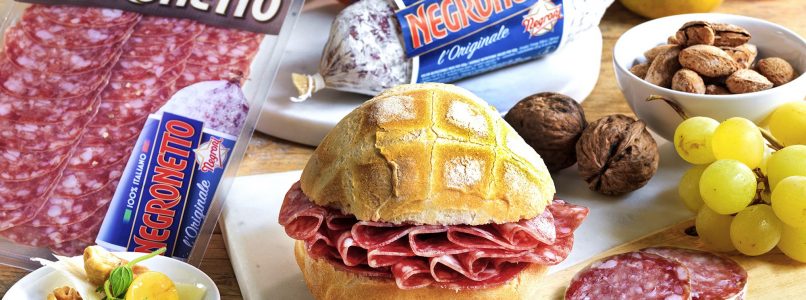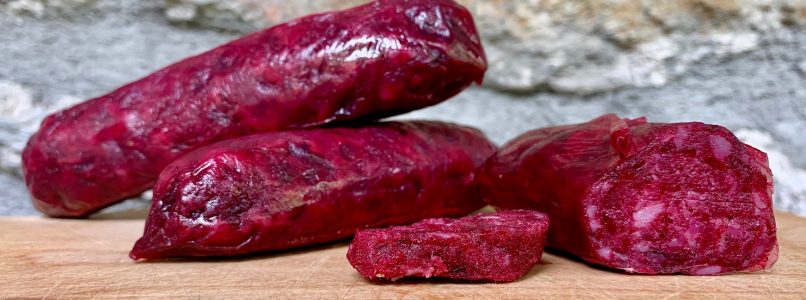You can't say you know the Valle d'Aosta if you don't learn at least a few words in patois. In fact, this local Franco-Provencal dialect is strongly intertwined with the culture and everyday life of the Valle d'Aosta: it is studied at school, it is present in proverbs and songs, used for names and nicknames; and then it changes a lot from one valley to another. One might not even understand each other from one country to another, if not even within it. And one of the words that I found the most variants of was precisely betserì, which in patois indicates the various cured meats produced at home, including the inevitable boudin.
Betserì, the homemade Aosta Valley butchery
In patois betserì (or betzì, betzerie, betsì, bezee) means "Butcher's shop". In the Valley it is used to indicate the pork butchery of the house, that is the set of the various cold cuts and sausages that are traditionally prepared when the pig is killed or even more the cow, the animal par excellence of this region. The Aosta Valley, in fact, is one of the very few places where one is made sausage only and exclusively from cow, the Mojné in patois (which would be "shepherd of heifers") usually breed tarine, abondance or dappled red, black or brown Aosta Valley; as well as the best known and most popular moccetta (only with aged cow's thigh) and the rarest teteun (with cow udder). The pig is raised only by a few, in particular to have a fat part inside the meats. "In the past, it was more common to keep the pig, it was brought up in the summer pastures to make him eat the whey of the fontina processing and then be slaughtered in the autumn", explains Diego Bovard, saffron producer originally from Valgrisenche. Today there are mainly mixed sausages, le saouseusse, with a part of cow, one of pork and sometimes an addition of lard, in varying quantities according to the different family recipes. But the most common sausage ever in Valle d'Aosta today is boudin, which you prepare with beets and potatoes and it is one of those few sausages with a vegetable inside, together with Ciuìga del Banale with turnip in Trentino.
The variants of the boudin
Saying boudin in Valle d'Aosta means everything and nothing, since there are an infinite number of different boudins. And even when similar, they could be called differently in patois. The basic boudin is a sausage from lard (about 3 kg per 10 of dough), potatoes, salt, pepper and various spices; some also add bacon, garlic, sugar or wine. The potatoes recommended by experts, as by the two producers Remo and Ivo, are the small ones from Valle d'Aosta, red on the outside and yellow on the inside, floury at the right point (perfect even fried). Then they can be distinguished three types depending on the valley we are in: the first boudin is that of Middle Valley, the most traditional and characteristic, to which pig blood is added; then there is that of Lower Valley, the so-called salampatata or potato salami, to which is added only a ladle of blood for 20 kilos of dough, which in fact is the pinkest of all; finally, there is that of Upper valley, towards Mont Blanc, where blood (which was banned for a period, in particular during the mad cow scandal) is replaced by beetroot, which in some areas is called "red carrot", an imperfect translation from patois. Unlike the others, this boudin is more digestible and sweeter, so it is the version that usually likes best. But it is no coincidence that boudin in French means "black pudding".
Boudin in the kitchen
Much of the secret to getting a good boudin lies in the seasoning, which must take place in the right places, with the appropriate temperature and above all for the time necessary. Usually, like other cured meats, boudin is also prepared in the cold, in the winter period from December to February; after about fifteen days of salting with salt and herbs, it must mature for at least three or four months. Then it is ready to be consumed in the classic Aosta Valley snack (also called boccoun or roussignon, in patois), in the company of other ever-present products such as Lardo d'Arnad, coppa, pancetta, various cheeses, rye bread, boiled potatoes, peppers and bagnacauda croutons (Piedmont is nearby) . But in reality boudin also has another use in the kitchen: you can eat fresh, freshly made, before the seasoning begins, usually in the oven or in a pan, with potatoes or apples, as Denise Marcoz prepares it for The Grand Baöu, which in patois means "The big stable".
Where to find the boudin
Finding someone who now raises pigs in the valley and then prepares their meats directly is not so frequent. In fact, most of the pork used for pork butchery is purchased elsewhere. But in Lo Grand Baöu no, because here Denise everything possible is produced, even hydroelectric energy from the nearby river. And what he doesn't have, he buys from trusted producers nearby. The Grand Baöu, in fact, is located on a mountain pasture, almost 1900 meters high, in the Vertosan valley. It can only be reached by going on a dirt road for kilometers, a true mule track that wasn't even there until the 1980s. "Already so much that there is this road today!". Here, Denise's maternal grandparents took their cows to the mountain pastures until her father in 1973 Renzo, a great and well-known carpenter, decided to open a restaurant with his wife Elena in the kitchen. Today it is Denise who carries out the activity, from June to September, complete with rooms and with the same care and dedication of her predecessors. The rest of the year Denise, in addition to doing continuous research in the kitchen, is a veterinarian: for this reason, she knows in depth the world of animals and what she puts on the table, first of all her panel of artisan sausages, a real betsì!
Alternatively, you can find the boudin at the Macelleria-Gastronomia Segor of Villeneuve or at the Pain de Coucou of Saint-Pierre, an excellent place to try the Aosta Valley snack; or, again, by Bertolin, also the author of many other local products. Still, the best place to try homemade pork butchery can only be one home, where it is still prepared as it once was, with the same care, but above all with its own personal and handed down family recipe.

